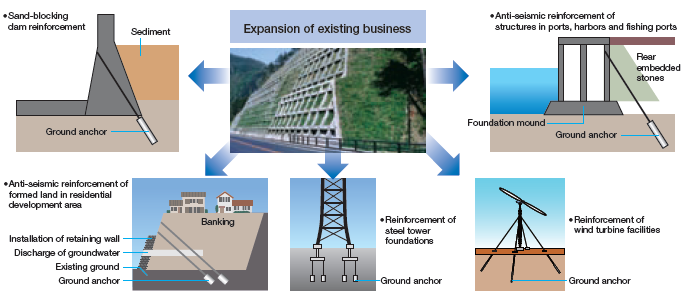Roughly 70% of Japan’s landmass is mountainous, and the country is geographically and geologically prone to landslides. Soil disasters frequently occur in Japan on account of meteorological conditions such as typhoons, the rainy season and local downpours. The danger of substantial damage in a large earthquake has been highlighted for ports, harbors, fishing ports and related facilities and residential land banking, posing a threat to people’s lives. In the field of environmental and disaster prevention, we supplies various technologies to protect people’s lives and property against these types of disasters.
Evolution of SEEE Ground Anchors from Industry-First Technology
A ground anchor is a device that is designed to support structures and is used in geotechnical and construction applications. Typically, ground anchors have been used to prevent damage from a landslide, as well as to reinforce civil structures.
In 1973, SEC developed “Tible Anchor Type A,” which featured a double anti-corrosion coating. This was followed by development of the cost saving “Type U” and by “Type M,” which can be used effectively even on soft ground. All three ground anchor products have been examined and certified by the SABO & Landslide Technical Center (STC) of Japan.
“SEEE Ground Anchor Method” is expanding applications year after year.

